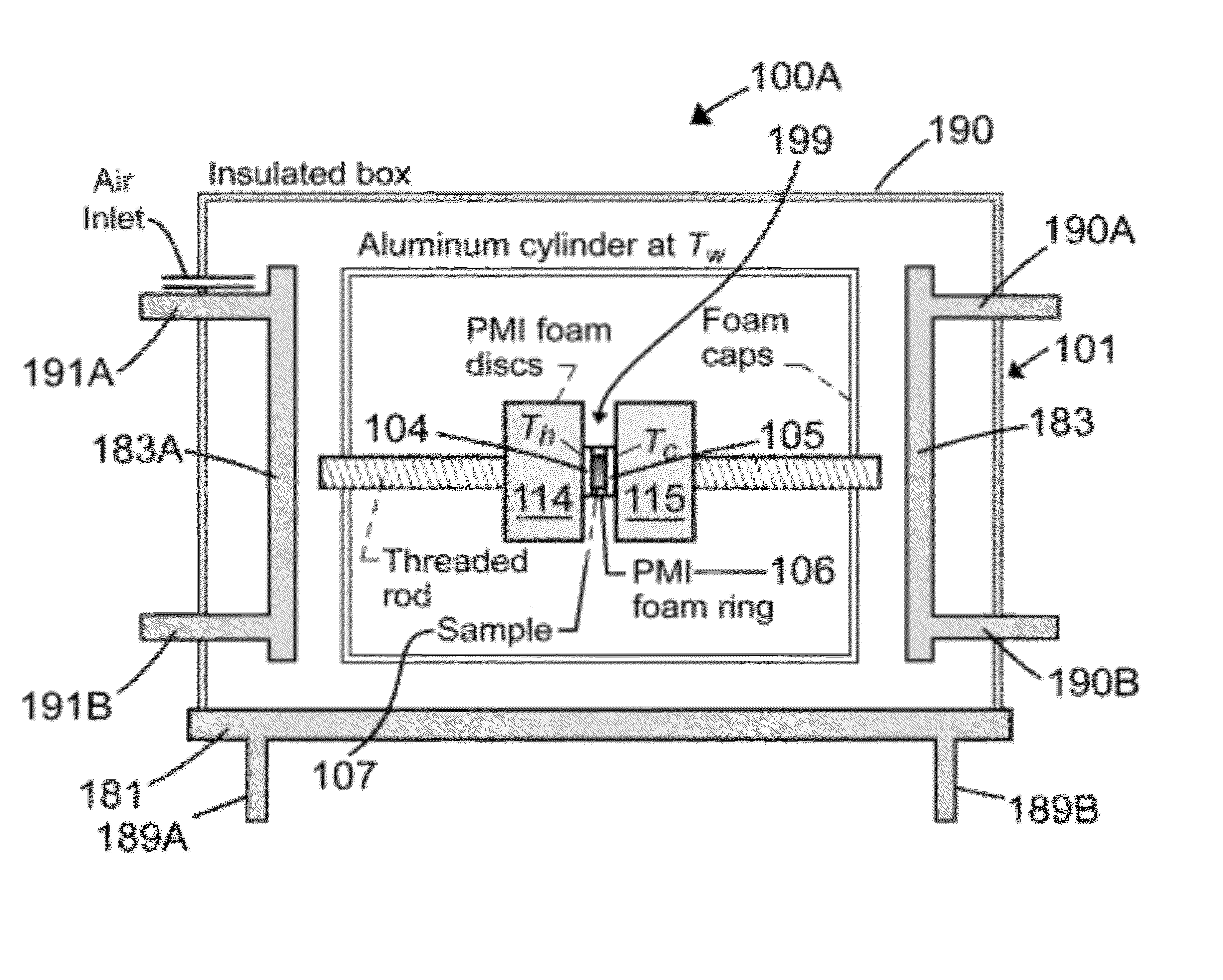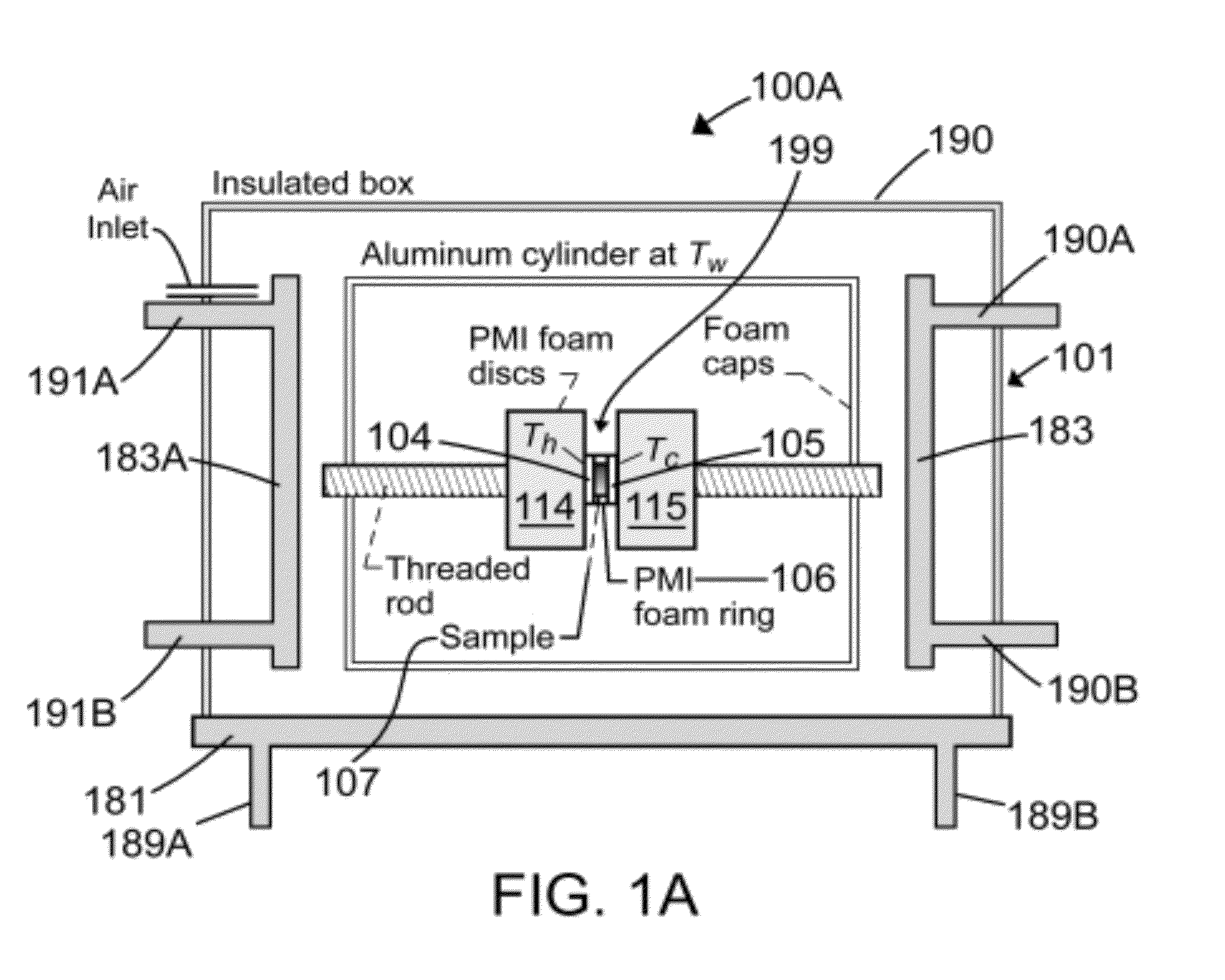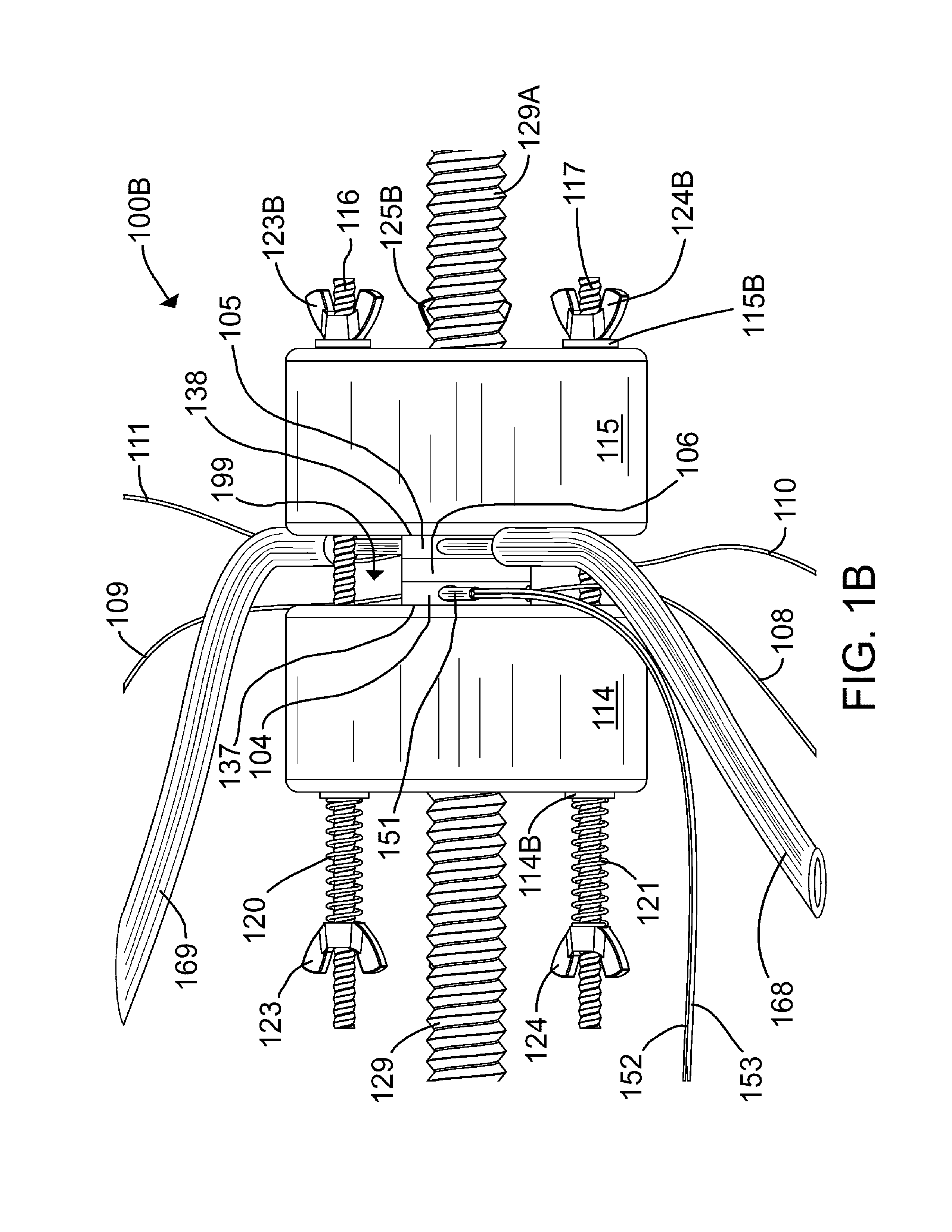Method and apparatus for measuring thermal conductivity of small, highly insulating specimens
a high-insulating, specimen technology, applied in the direction of material heat development, material thermal analysis, instruments, etc., can solve the problems of increasing the complexity of the technique of precisely measuring steady-state thermal conductivity, and reducing the convective heat transfer. , the effect of reducing radiation heat loss
- Summary
- Abstract
- Description
- Claims
- Application Information
AI Technical Summary
Benefits of technology
Problems solved by technology
Method used
Image
Examples
Embodiment Construction
[0073]NASA technical memorandum NASA / TM-2009-215460, published June 2009, entitled Method for Measuring Thermal Conductivity of Small Samples Having Very Low Thermal Conductivity, by Robert A. Miller and Maria A. Kuczmarksi, Glenn Research Center, Cleveland, Ohio is incorporated herein by reference hereto.
Apparatus Design
[0074]FIG. 1A is a schematic 100A of a first example 101 of a thermal conductivity measurement apparatus using a heated copper disc 104, a foam ring 106, a cooled copper disc 105, a first PMI foam disc 114 and a second PMI foam disc 115, supported within an aluminum cylinder housing with an insulated box thereover 190. FIG. 1A further illustrates an air inlet. The temperature of the air incoming is at 25° C. and is controlled by an air temperature control device (not shown). Chill plates 183, 183A are chilled (controlled to a temperature) preferably to 25° C. and communicate with a water bath through tubes 190A, 190B, 191A, and 191B, respectively. Bottom plate 181 i...
PUM
 Login to View More
Login to View More Abstract
Description
Claims
Application Information
 Login to View More
Login to View More - R&D
- Intellectual Property
- Life Sciences
- Materials
- Tech Scout
- Unparalleled Data Quality
- Higher Quality Content
- 60% Fewer Hallucinations
Browse by: Latest US Patents, China's latest patents, Technical Efficacy Thesaurus, Application Domain, Technology Topic, Popular Technical Reports.
© 2025 PatSnap. All rights reserved.Legal|Privacy policy|Modern Slavery Act Transparency Statement|Sitemap|About US| Contact US: help@patsnap.com



